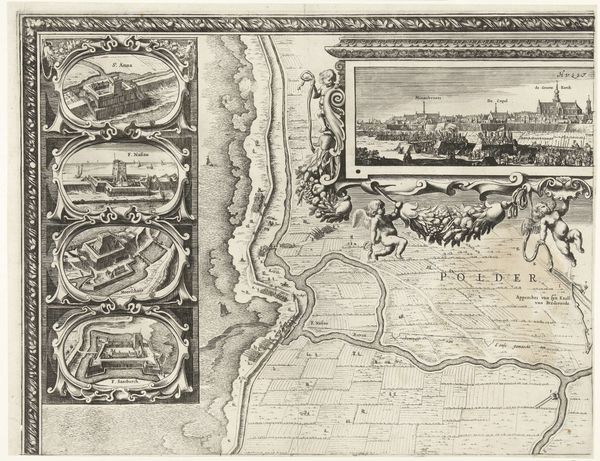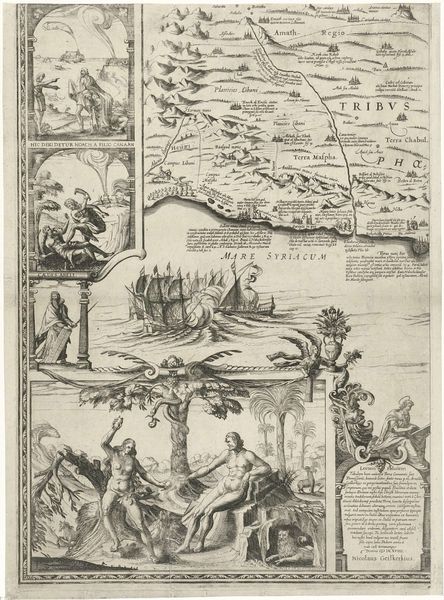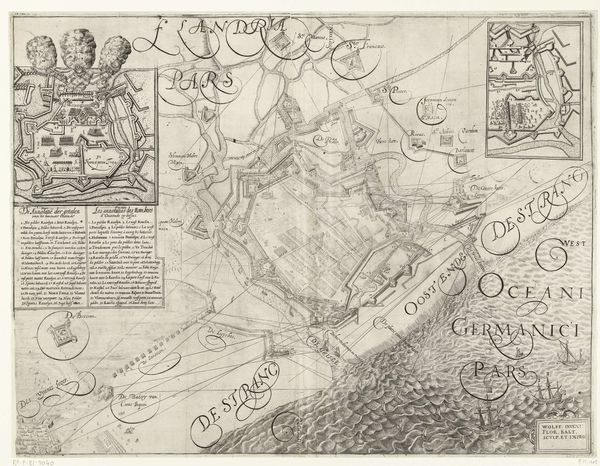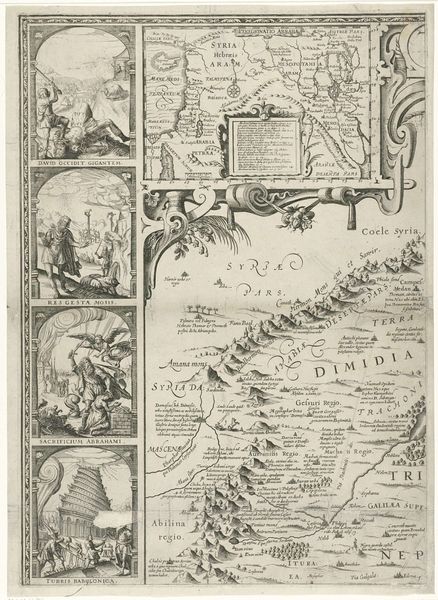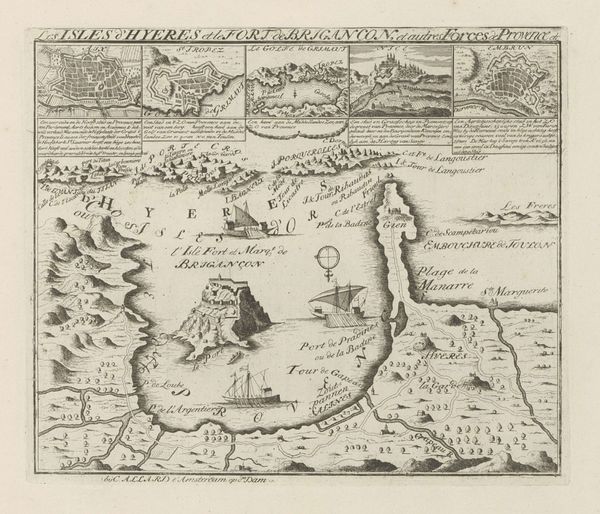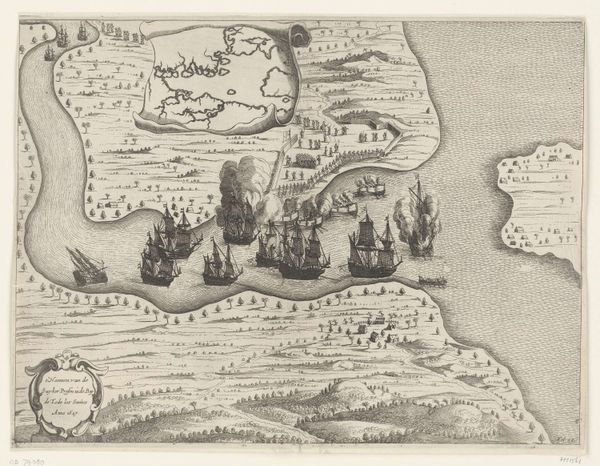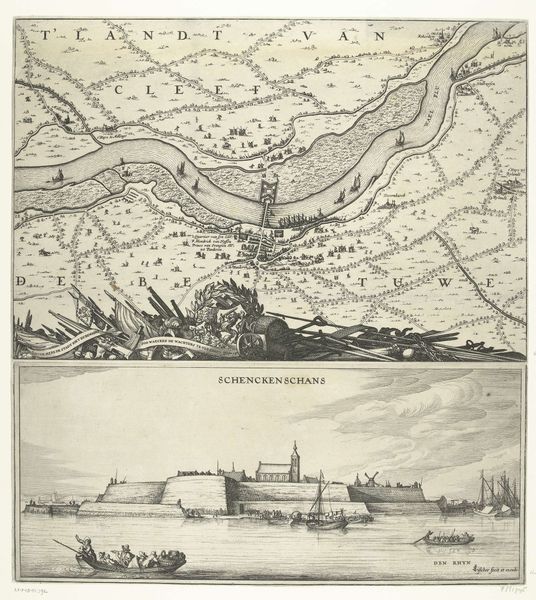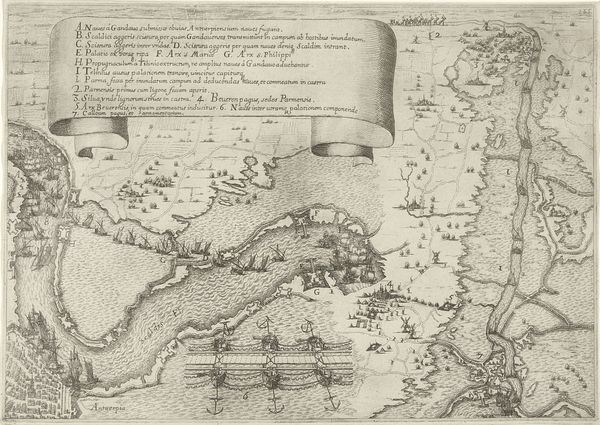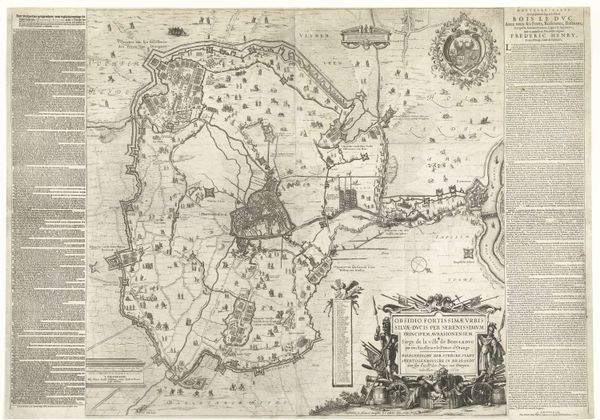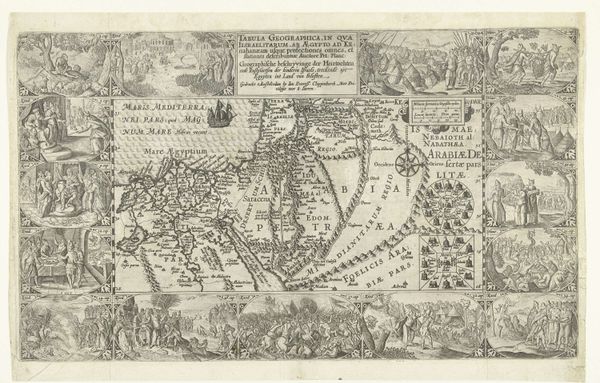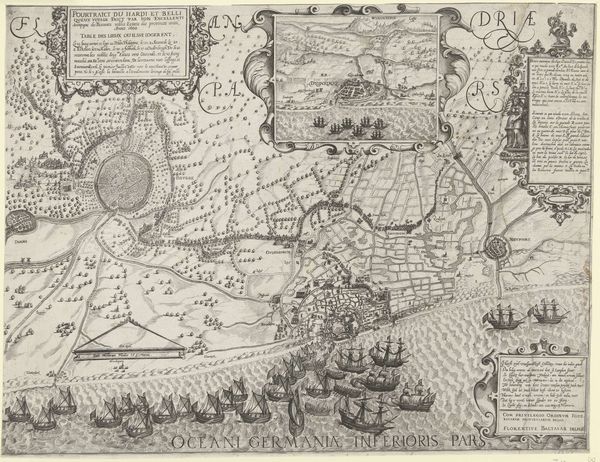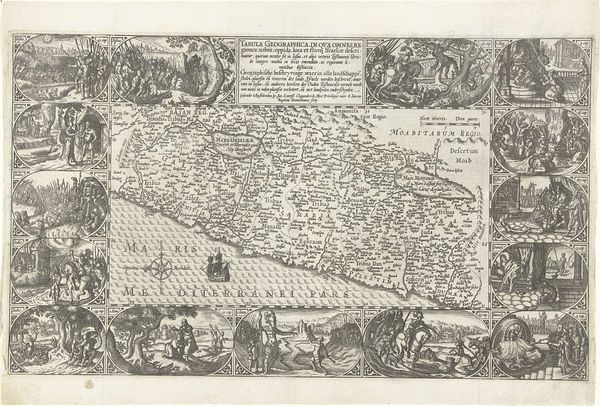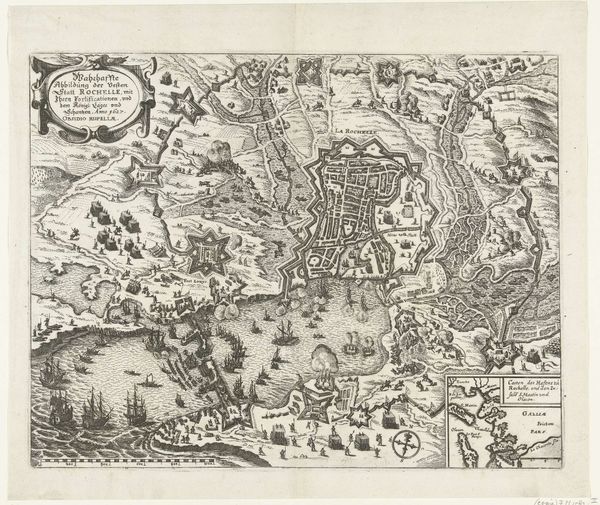
drawing, print, paper, ink, engraving
#
drawing
#
baroque
#
ship
# print
#
landscape
#
paper
#
ink
#
geometric
#
line
#
history-painting
#
engraving
Dimensions: width 413 mm, height 549 mm
Copyright: Rijks Museum: Open Domain
Nicolaes van Geelkercken made this map of Palestine sometime before his death in 1656. It’s an etching, meaning that the design was incised into a metal plate, likely copper, with a sharp tool called a burin, and then printed. Consider the labor involved. First, the meticulous work of the cartographer, surveying the land and compiling the information. Then the engraver, carefully translating that knowledge into a matrix for reproduction. And finally, the printer, who would have pulled each impression by hand. The quality of the print depended on all these skilled hands. Note the crispness of the lines, the evenness of the ink. These details speak to the social and economic context of the print. It was made to be circulated, traded, and consumed. This map shows that even seemingly straightforward images are rooted in complex processes of making, labor, and commerce. By attending to these material realities, we can appreciate the full meaning of the artwork.
Comments
No comments
Be the first to comment and join the conversation on the ultimate creative platform.

